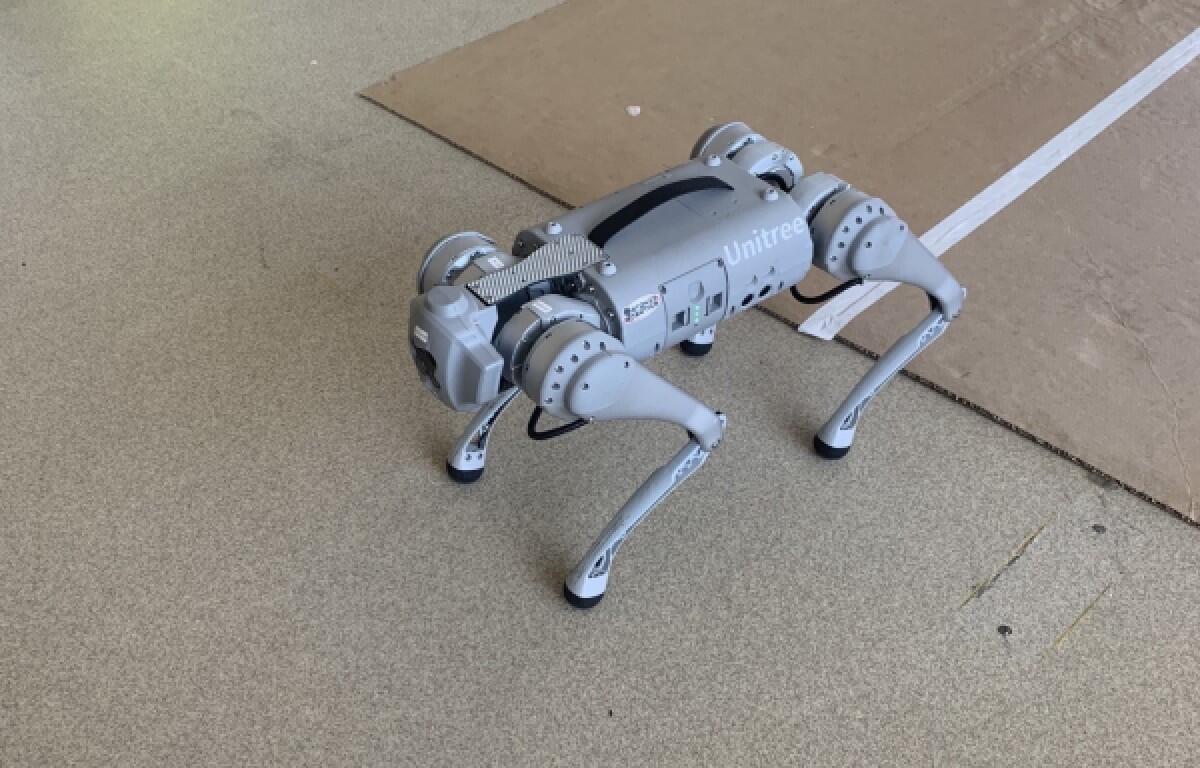CLARKSVILLE, TN – This summer, Austin Peay State University’s College of STEM purchased a robotic dog to enhance the learning experience for students in the Department of Engineering Technology and the Department of Computer Science and Information Technology.
The robot dog utilizes a variety of functions that incorporate many different scientific specializations. This technology has the potential to excite and engage students in ways never before seen on APSU’s campus.
“The capabilities of the quadruped robot are something that we are interested in,” said Jody Alberd, an assistant professor in the Department of Engineering Technology. “It was something we knew we could collaborate with the computer science program on and both departments could benefit from it.”
The robot dog has the capacity for advanced programming languages, including C++ and Python. Students will be given the opportunity to program the robot using these languages to perform specific tasks and follow instructions based on environmental cues. In turn, the robot is capable of learning from and engaging with its surroundings based on advanced student programming in a variety of programming languages, promoting hands-on learning experiences for APSU students.
“In the College of STEM, we understand the importance of collaboration and real-world experiences to better prepare our students for their careers after graduation,” said Karen Meisch, Dean of the College of STEM. “This robot dog incorporates robotics, coding, engineering, physics, mechatronics and technology in ways that will challenge our students to think creatively and approach new challenges in an innovative way. It also does it in a way that is fun.”
APSU’s Robot Dog in Action
In addition, the robot features an all-inclusive package meant to enrich the education of students within the College of STEM, regardless of their specializations or knowledge of robotics.
The ultimate goal is for the robot dog to engage students and faculty unconventionally. According to Alberd, the Department of Engineering Technology hopes that all departments will recognize its potential and take advantage of the new learning opportunities.
“The hope and the intent is that all the departments will think outside the box,” Alberd said. “We feel that there’s a lot of capability and potential in this robot and that other departments that might not normally consider robotics might consider exploring what new uses can be done with it.”
The robot was purchased for several STEM departments, including engineering technology, computer science, physics and astronomy. By allowing each department access to the robot, its potential uses can be recognized and developed through student and faculty collaboration.
“For example, let’s say the Department of Agriculture doesn’t have the resources to invest in robots, but maybe they want to explore the potential of this robot to help them with their program and to expose that information to their students,” Alberd said. “That was really the intent. For the departments to think outside the box and find ways to collaborate with us. To do things that we wouldn’t normally expect when you think of robotics like this.”
The robot’s potential uses are further emphasized in its programming, which features both artificial intelligence (AI) and remote capabilities. The robot contains the programming capacity to perform actions through AI as well as the ability to be controlled remotely through an operator. It also includes a sensor package that allows it to analyze the environment and interact with it appropriately.
“We can challenge our students to program specific tasks within that environment–look at the environment and then function and interact with that environment in a number of different ways,” Alberd said.
The robot’s main purpose is to engage students in the classroom through interactive opportunities. By integrating the robot into the classroom throughout the College of STEM, students can see their work pay off while gaining hands-on experience.


